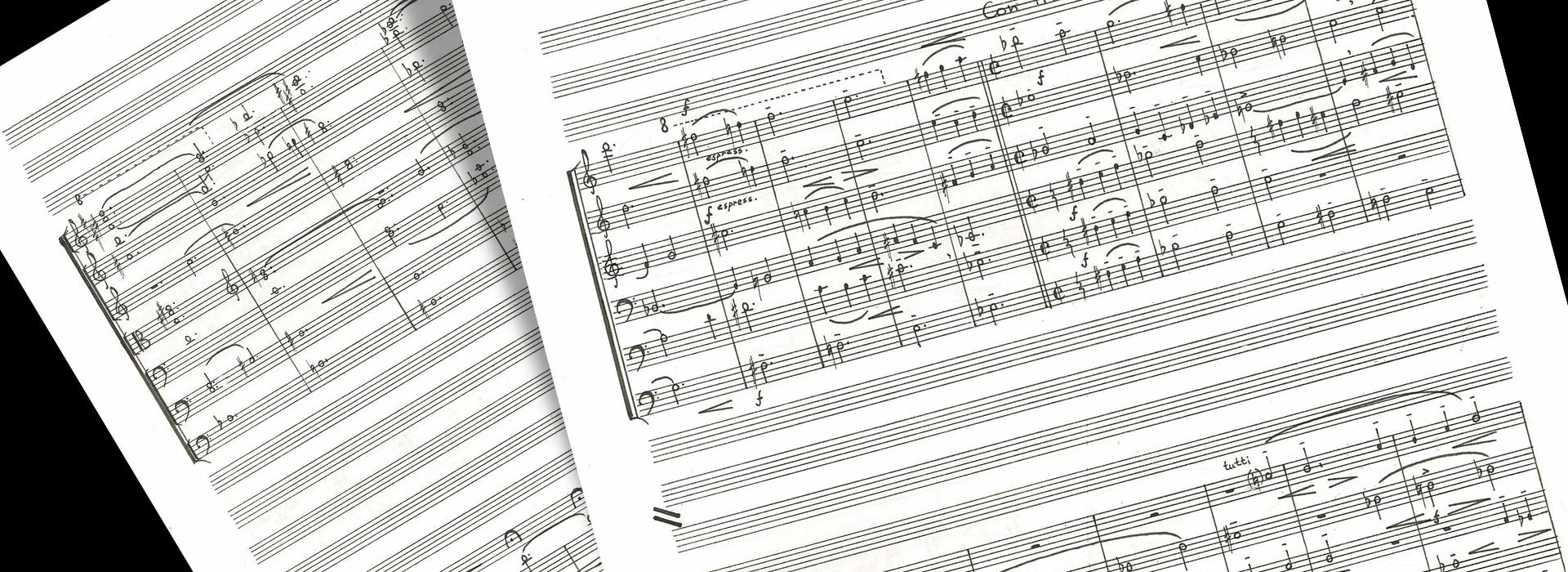“Faust Concerto” (2008) Sinfonia Concertante for viola and symphonic orchestra
The “Faust Concerto” by an Israeli-Russian composer Uri Brener was written as a part of a completion work for his doctoral studies at the University of Bar-Ilan (Israel) in 2008, which resulted in a PhD degree “cum laude” later in 2009. In 2010 the work received the prestigious ACUM award and thus was nominated as the best symphonic piece of the year.
In the resume given by prominent Israeli composers and musicians (such as Prof. Yinam Leef, Prof. Michael Wolpe, Prof. Gideon Lewensohn, conductor maestro Doron Salomon and others) it was stated:
“In his “Faust Concerto” Uri summons up an intensive work of the last few years … One can see a very high level of the composition craft together with the interpretation of the musical legacy from the
19th century to our times”
“It isn’t simple to meet a challenge of writing for a medium such a solo viola and a symphonic orchestra. In this regard Mr. Brener in his “Faust Concerto” demonstrates professionalism and knowledge together with originality of ideas and deep cultural thinking, all these having a rich musical foundation. No doubt, this work will find its way to the best viola players` repertoire in the nearest future…”
..“Faust Concerto” is a big-scale composition written in the best concerto traditions, which brings idiomatic and effective solo writing together with skillful orchestration and utilizes the in-built tension between the solo and the orchestra parts to create a dramatic expression rooted in a non-musical narrative…”
“..Extremely inspirational and impressive work..”
The Concerto contains three movements performed attacca, each one having certain imagery – allusion to some fragments from the famous tragedy by J.W.von Goethe. However it is not a program-work in a strict sense of the word. Many images, characters and motives appear all through the piece, thus making it closer to the symphonic genre rather than to an illustrative musical canvas in the spirit of Richard Strauss.
The particular form used in this piece can be identified as Sinfonia Concertante: the interaction between viola and orchestra is not one of soloist vs. accompaniment, but rather one of a symphonic piece with an obligato viola part faded in and out in a smooth and organic manner, much like a viola part in “Harold in Italy” by Berlioz. This allows the solo sections to be more intimate in their character, instrumentation and registration, all this without compromising the symphonic nature of the piece.
Like in the “Harold in Italy”, the viola itself has undoubtedly a “main hero” character, presenting as it were Faust`s reflections to the musical-dramatic environment. While generally one can attribute a somewhat feminine quality to both violin and cello in many senses, in regard to viola the situation is just the opposite – its voice tends to picture a personage of a masculine nature. At the same time, however, it has a very special nostalgic-romantic quality to its timbre, especially in the high register, thus making the choice of the viola as Faust personification very much non-accidental. It is precisely the above-mentioned manliness mixed with romantic flavor that provides viola with its unique, somewhat ambivalent double-nature that fits perfectly an image of the main hero, as Goethe puts it with Faust`s own words:
“Ach! die Erscheinung war so riesengroß,
Daß ich mich recht als Zwerg empfinden sollte. Ich, Ebenbild der Gottheit…”
(“Oh! the apparition was so huge That I should feel right as a dwarf. I, the image of the deity … “)
“Zu jenem sel’gen Augenblicke
Ich fühlte mich so klein, so groß…”
(“For that same moment I felt so small, so big … “)
“Den Göttern gleich´ ich nicht! zu tief ist es gefühlt;
Dem Wurme gleich´ ich, der den Staub durchwühlt..”
(“I’m not like the gods! it is too deeply felt; Like the worm, I rummage through the dust. “)
This ambivalence and a seeming contradiction in self-definition are Faust`s lot all through the tragedy, and so is the viola part in the Concerto – it is all the time in search for its “true identity”, from its lowest up to its highest register. It remains uncertain whether it is an “aggressive” virtuoso piece, or, rather, a lyrical (tragic?) one. It leaves a listener with a question mark just like the tragedy itself (did Faust actually “win”? Was it a right thing to make a pact? And was the Mephisto actually that evil? etc.)
Taken away their allegorical nature, these questions are in fact most profound existential dilemmas pondered upon by the best human minds throughout millennia.








